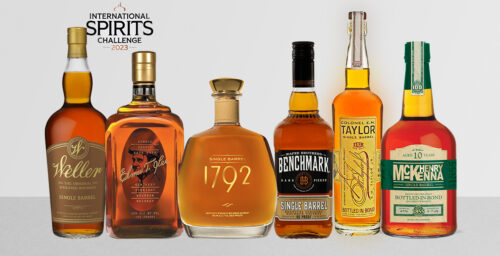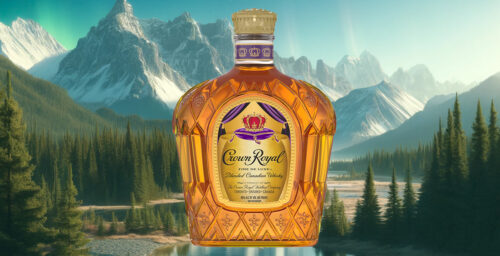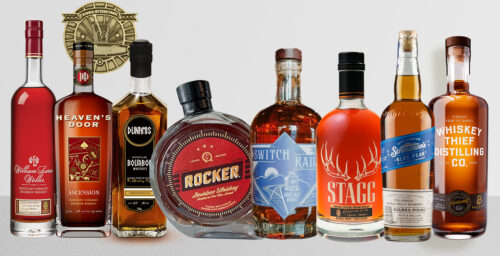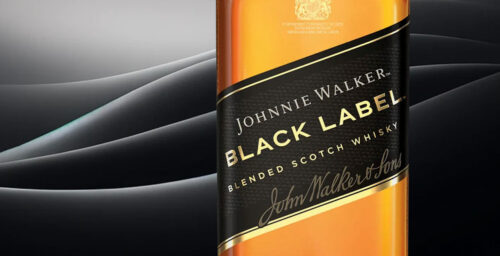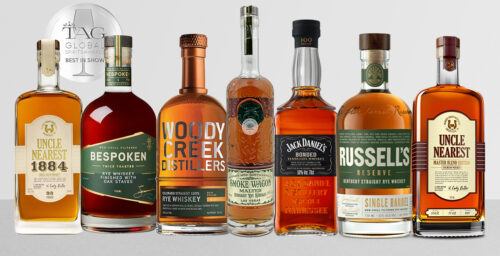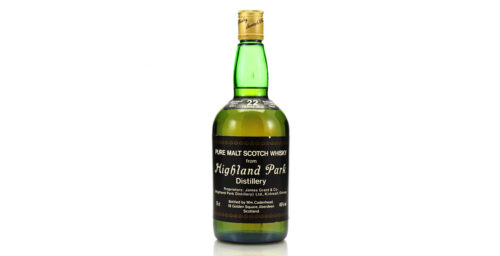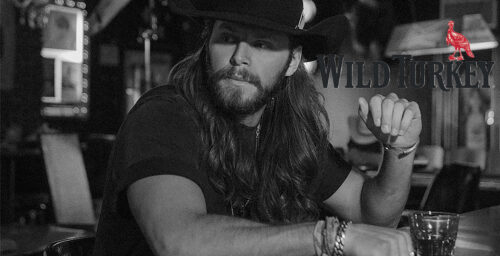California’s St. George Spirits has been a pioneer in the craft whiskey industry, and this year, the distillery marks 40 years in the business.
Often referred to as “America’s original craft distillery,” St. George Spirits will celebrate its anniversary year with special activities and new releases.
Established by founder Jörg Rupf in 1982, St. George forged its place in the whiskey industry with partnerships with local farmers, a foundation that still supports the distillery today.
Dave Smith, head distiller and blender for St. George, recently visited with The Whiskey Wash to talk about the 40-year-old brand’s independent spirit, creativity, and ability to buck conventional trends and push beyond imagination’s limits.
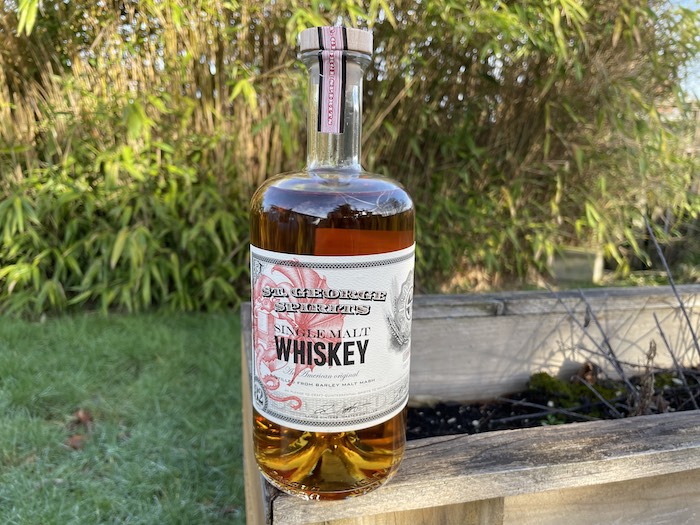
The Whiskey Wash: What was the inspiration behind St. George Spirits more than 40 years ago?
Dave Smith: “St. George Spirits was founded in 1982 by Jörg Rupf. He came to the (San Francisco) Bay Area from Germany and was inspired by the quality of fruit and nascent wine culture. He found his passion as he married his own traditional distillation background from the Black Forest with spectacular California fruit to make exquisite brandies unlike any before made in the United States.”
TWW: Did you know it was going to be a groundbreaking craft distillery at the time?
Dave Smith: “While the term ‘craft distillery’ didn’t exist when Jörg founded St. George, he was certainly aware that nobody else in the United States was doing what he was doing at the time. This understanding propelled him to train and mentor other aspiring craft distillers here in California and across the United States to grow a movement beyond his own distillery.
Prior to joining in 2005, I knew of St. George by reputation for making amazing spirits as well as Lance and Jörg both being great people in our California alcohol community of winemakers, brewers, and the very few distillers. The first thing that I ever heard about St. George was from my brother Matt, a wonderfully talented Bay Area winemaker, ‘Dave, we have to go by St. George when they get their raspberries this season. They ferment and distill everything over there and the whole place just smells like jam. Lance and Jörg are good folks as well. You’ve got to meet them.”
TWW: What ethos did St. George adopt with spirits decades before the industry blossomed?
Dave Smith: “First, we have our own point of view: St. George was founded as an eau de vie distillery and this influences our approach to every spirit. While eau de vie is French for water of life, it’s often used to describe un-oaked fruit brandies. Without time in oak casks, there’s nowhere to hide flaws or imperfections in the spirit. We have to capture a perfect sensory snapshot of that ripe pear at the peak of the season and translate it through fermentation and distillation into a lush and iconic brandy. This demands some reverence for choosing only the best raw ingredients and then the necessity to execute our craft at the highest level. It’s this heritage that defines our ability to create unique statements in whiskey, gin, vodka, liqueurs, absinthe – all beyond our roots in eau de vie.
We think of single malt whiskey as an eau de vie made of barley, which means using a mashbill bursting with roast levels. While this decreases yield (roasted sugars are not fermentable sugars), it makes our whiskey truly our whiskey. Our Lot series of single malt begins with two-row pale barley, as well as crystal, chocolate, black patent, and Bamberg malts. Each of those specialty malts contributes darker and richer flavors to help make even the unaged whiskey lovely before it touches a barrel, our proverbial eau de vie of barley. After that, both patience and a thoughtful selection of barrels allows us to further develop flavors already present in the whiskey.
Second, distillation as an art, not a commodity: This means that we seek to express ourselves and say something new through the language of spirits. For Jörg, that meant experimenting with fruit like kiwi and quince. Today, we constantly experiment with new ingredients, but I really love the process itself. Distillation and blending allow me to share an experience with someone that I can’t otherwise capture with poetry or painting; it’s literally about putting my own message in a bottle.”
TWW: How important is grain to glass for quality, for quantity, and for sustainability?
Dave Smith: “This is a very important question, but also complicated as every producer needs to weigh sourcing options based on their regional agricultural system, water availability, etc. I highly recommend Shanna Farrell’s book A Good Drink for a deep dive into these issues. We spoke to Shanna about our own evolving sourcing challenges as we face climate change, scaling up production, etc., and she includes perspectives from other distillers elsewhere in the world as they address their own sourcing challenges and issues related to sustainable production.”
TWW: Can you tell us some of the defining moments in St. George Spirits history?
Dave Smith: “There are so many defining moments over 40 years of building a family of 20-plus spirits, but from a whiskey perspective, the major milestones would be:
1996: Lance comes aboard with intent to make American single malt whiskey … this was a huge transition point after 14 years as a dedicated eau de vie distillery;
2000: Lot 1 of St. George Single Malt Whiskey was released. Our goal each year is to increase expressiveness and flavor with every release … while staying true to our whiskey’s signature;
2011: Our first Breaking & Entering American Whiskey release … first time sourcing, coupled with a conscientious decision to be forthright about sourcing and truth in labeling;
2014: Received Whisky Magazine and Whisky Advocate awards;
2016: First Baller Single Malt Whiskey release, ‘a California take on the Japanese spin on Scotch whisky’ as Lance says.”
TWW: How do copper pot stills improve upon the quality versus a more industrial approach to distilling?
Dave Smith: “A good distiller can create good spirits with carefully selected raw materials and the right intention and equipment on both pot stills as well as column stills. Tiny batches or big batches, it comes down to materials, equipment, technique, and goal.
We have five production still pots ranging in size from 250 liters all the way up to 1,500 liters, and while our pot stills contribute to the character of our spirits, the quality of the spirit is driven by the distiller’s organoleptic analysis and intention as they’re distilling. That’s a fancy way of saying that we smell and taste everything that we distill while monitoring temperature, volume, and proof. We ruthlessly make decisions and adjust settings on the still pot based on that organoleptic analysis first and foremost.”
TWW: What are some of the finishes St. George has experimented with, and what works well?
Dave Smith: “We’ve experimented with a lot of cask finishes since releasing our inaugural Lot 1 of St. George Single Malt Whiskey in 2000. Of course, we’ve used American and French oak, sherry and port casks, but we’ve enjoyed the good fortune to source California-style Sauterne casks for about a decade now and they’re influencing our Lot series with every release. They’re wonderfully balanced between the weight of French oak and these light candied tones along with touch earth and mushroom.
I love barrels that expand on one another in sort of a 1+1 = 3 way. Last year we selected an Agricole-Rum-cask finished whiskey as part of our Lot 21 blend, which really stretched and developed those California-style Sauterne flavors. That rum-finished cask was a uniquely unbalanced barrel with notes of grass and briny olive wrapped around our Single Malt’s classic dark chocolate, hazelnut, orange peel flavors. That might sound strange, but it had richness and depth and screamed to be used now. I kept nosing that same glass the rest of the day, put a lid on it, and checked it out again the next morning – it was still fascinating and needed to be used. So we tried it in our Lot 21 blend, and that unbalanced nature contributes just a hint of grass, the olive creates a counterpoint to the chocolate and hazelnut and that barrel makes our Lot 21 Single Malt Whiskey that much better.
I also really need to mention our Baller Single Malt as we’re talking about finishing casks. Baller is inspired by having bowls of ramen and Hakushu highballs at our friend’s restaurant, The Ramen Shop, in Oakland. Obviously, I love our Lot series Single Malt, but those chocolate and hazelnut flavors are too rich for a highball. So we created Baller, which has two-row pale and Munich malt and is aged primarily in used American oak, with a bit of French oak for a much leaner flavor profile – our unique take on the perfect highball whiskey. To complement that leaner profile, we filter the Baller through maple-hardwood smoke charcoal and then finish some of the whiskey in house-made umeshu casks. If you’re not familiar with umeshu, it’s commonly referred to as plum wine in America, and is made by soaking fresh ume fruit (a small Japanese stone-fruit) with rock sugar and shochu. After a few months, the rock sugar has slowly dissolved into the shochu as the ume fruit has infused sweetness, acidity, and these delicate apricot and sherried flavors creating our umeshu. We then separate the ume fruit from the liquid, barrel age the umeshu between six months and a year, and then finish some of the Baller Whiskey in those umeshu casks for an additional six months to a year. The result is a balanced three- to four-year-old whiskey layered with sweet smoke and delicate sherried and floral stone fruit aromas that make for our perfect highball.”
TWW: Where do you see the future of the craft spirits industry in the next five, ten years?
Dave Smith: “While I don’t have the proverbial crystal ball to see into the future, I suspect that we’re going to continue to see more and more craft distilleries on a hyper local level. As state laws for distilleries continue to catch up to the state laws for wineries and breweries, it will encourage more creativity and innovation. Some of this will be great and local, while some of it will just be local.
TWW: What is a crazy project, money no object, that you’d like to take on at St. George?
Dave Smith: “It’s sort of hard for me to answer this one as I love being a part of St. George Spirits; to me, this is the crazy dream job. I’m already here contributing to America’s original Single Malt Whiskey.
With that said, we’ve boot strapped our distillery for the last four decades and if money were no object, I’d love to contribute to the design of a dedicated whiskey distillery that harmonizes sustainable form and function. Clean energy, efficient systems for exchanging heating and cooling needs, even using gravity to transfer liquids rather than pumps, it’s all doable, it just has to be designed into the process at the inception.
And I’d want to make single malt as well as bourbon and rye whiskies. And, of course, I’d want to blend everything together.”

